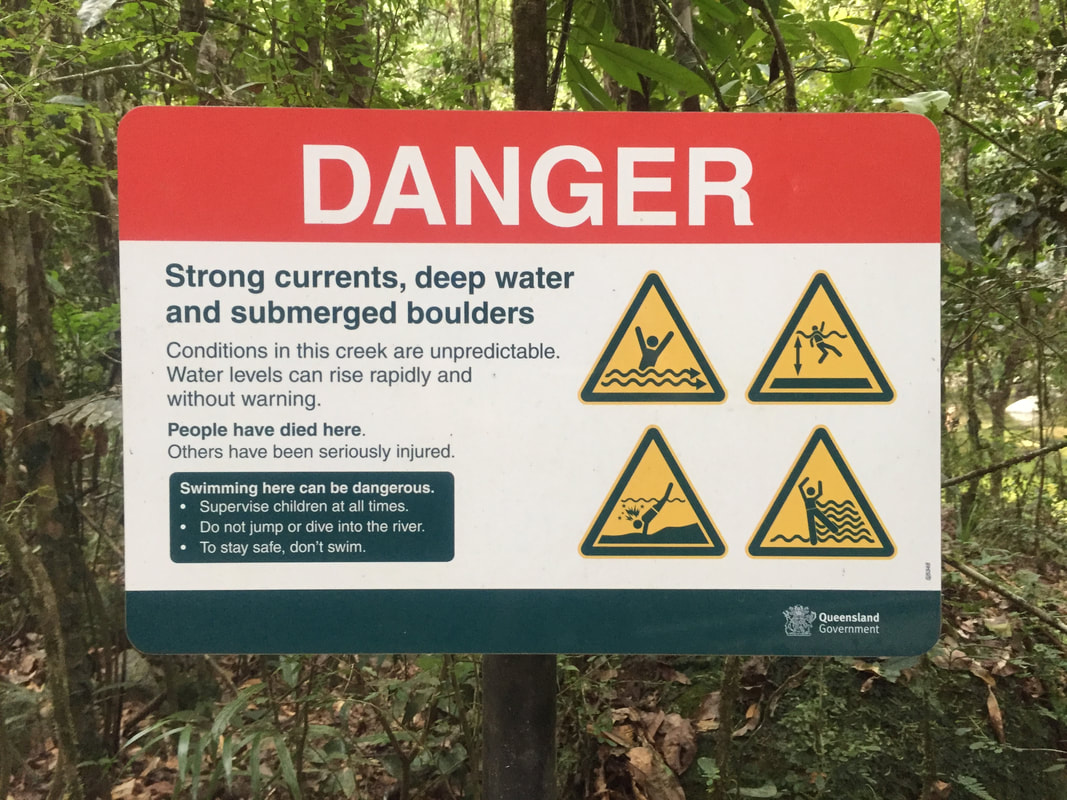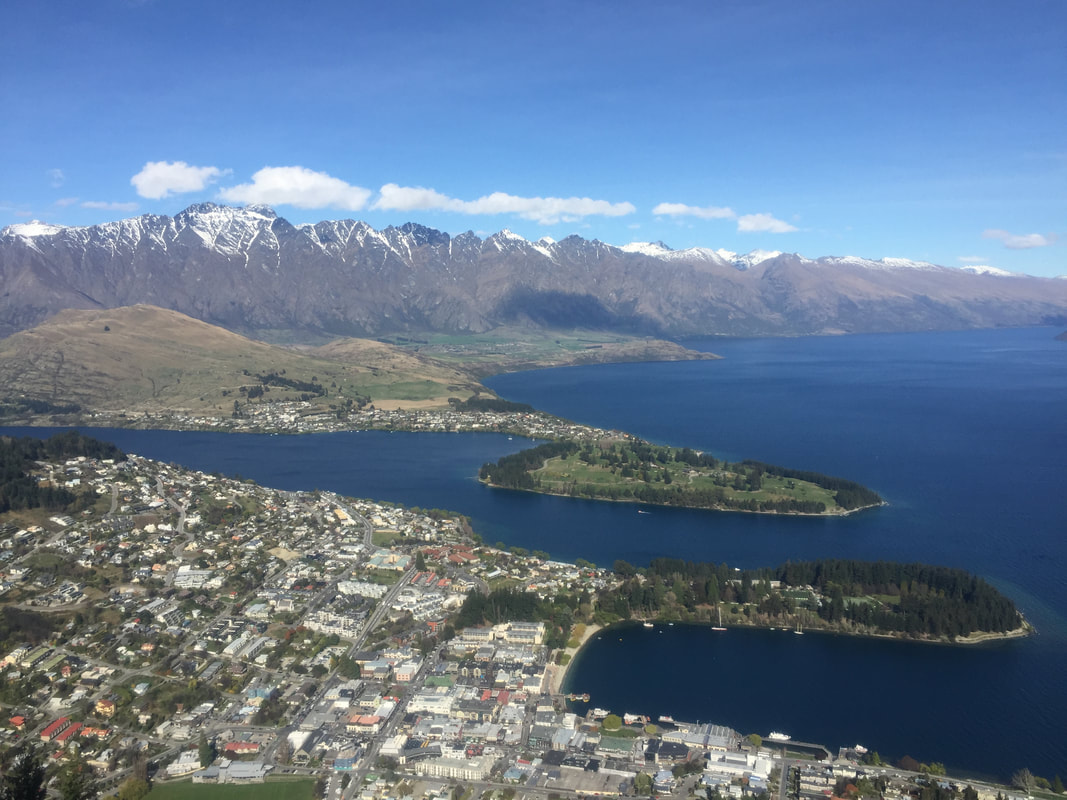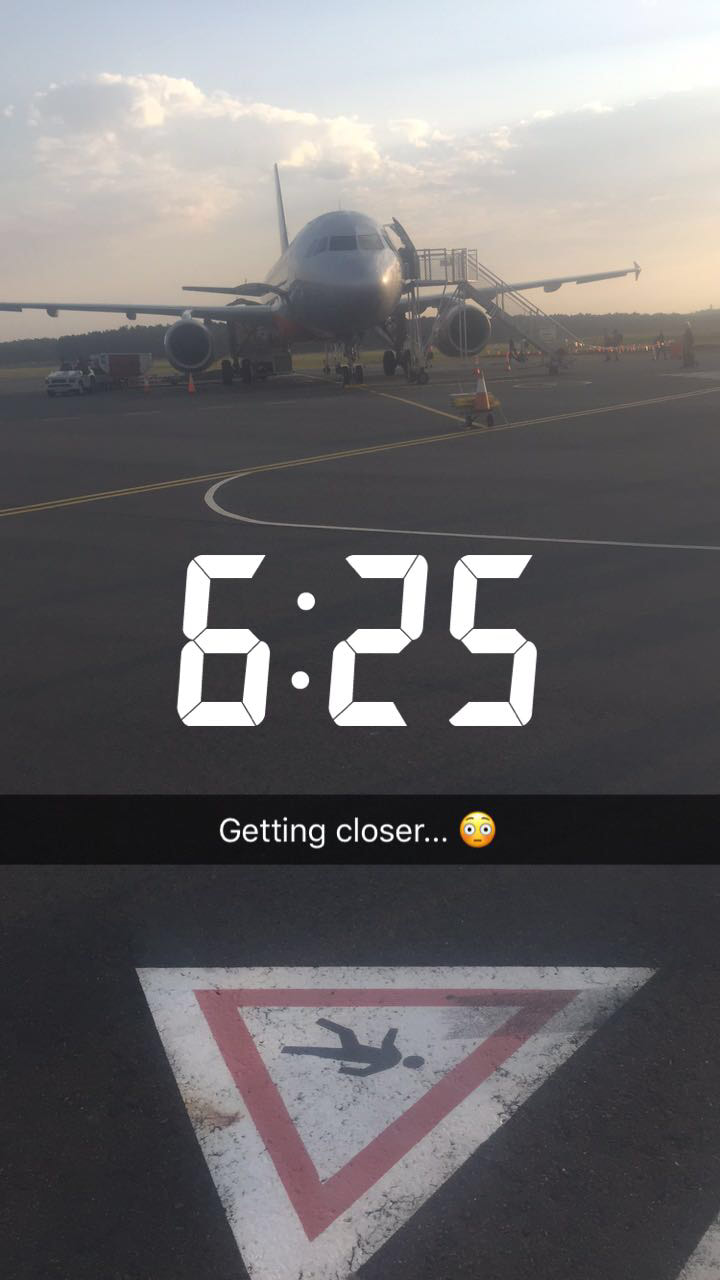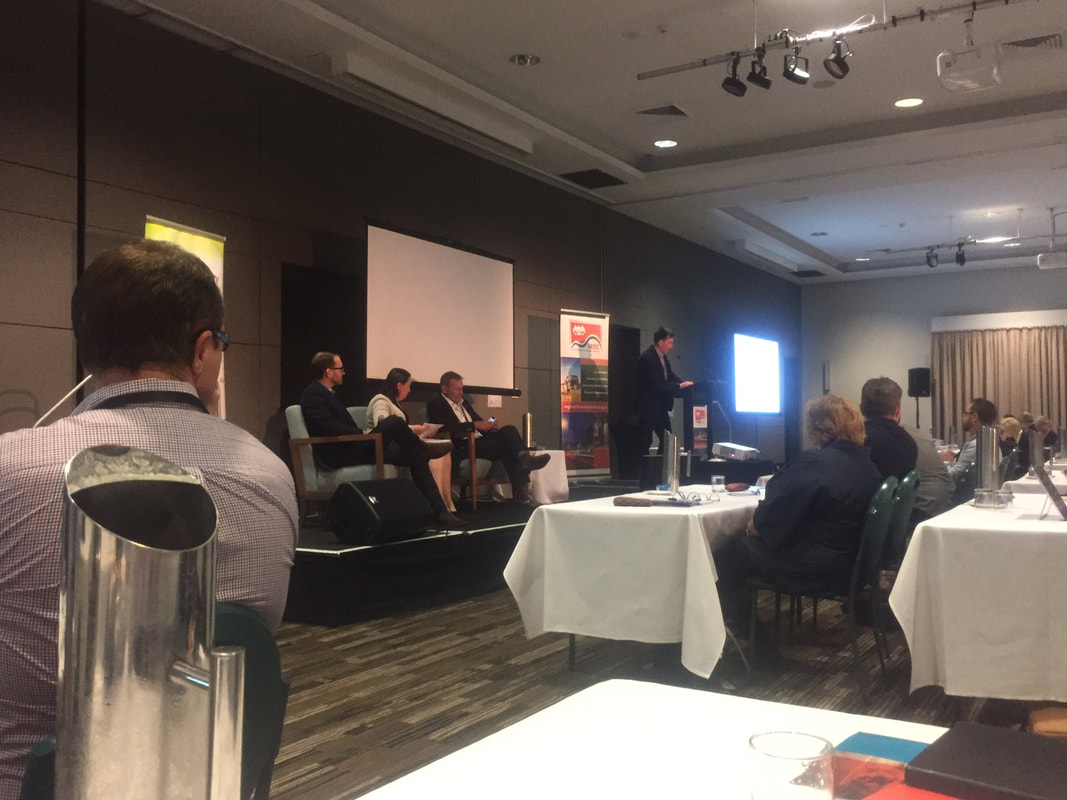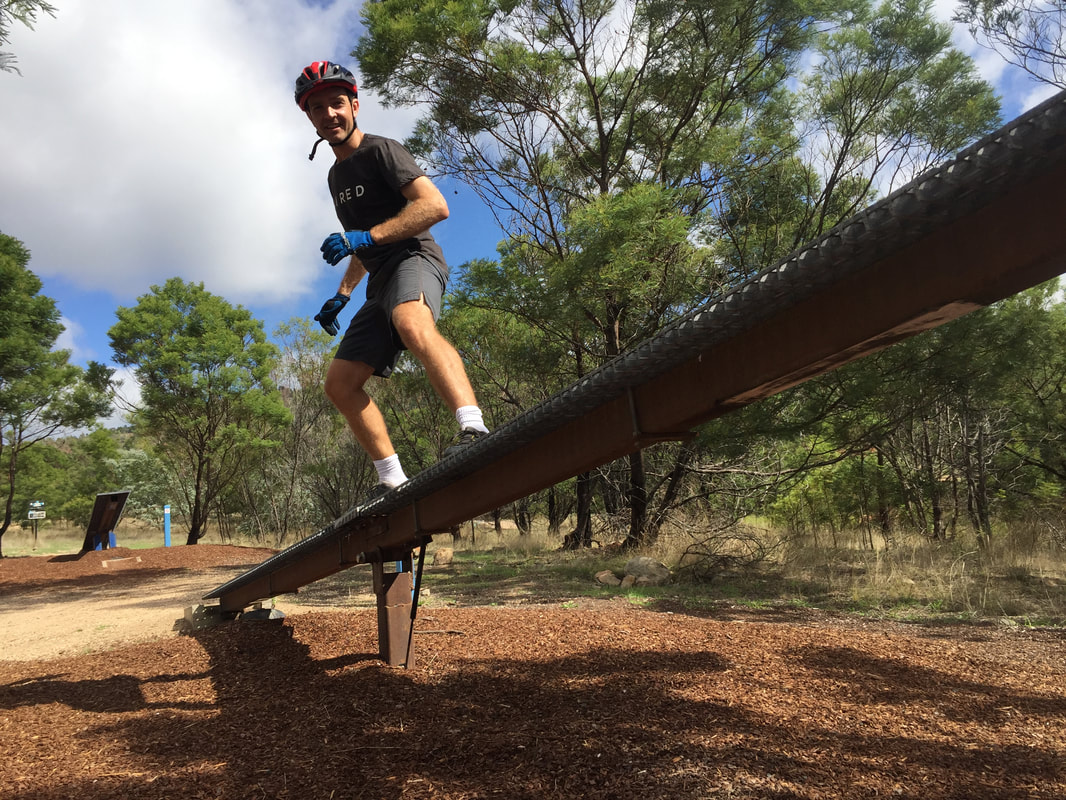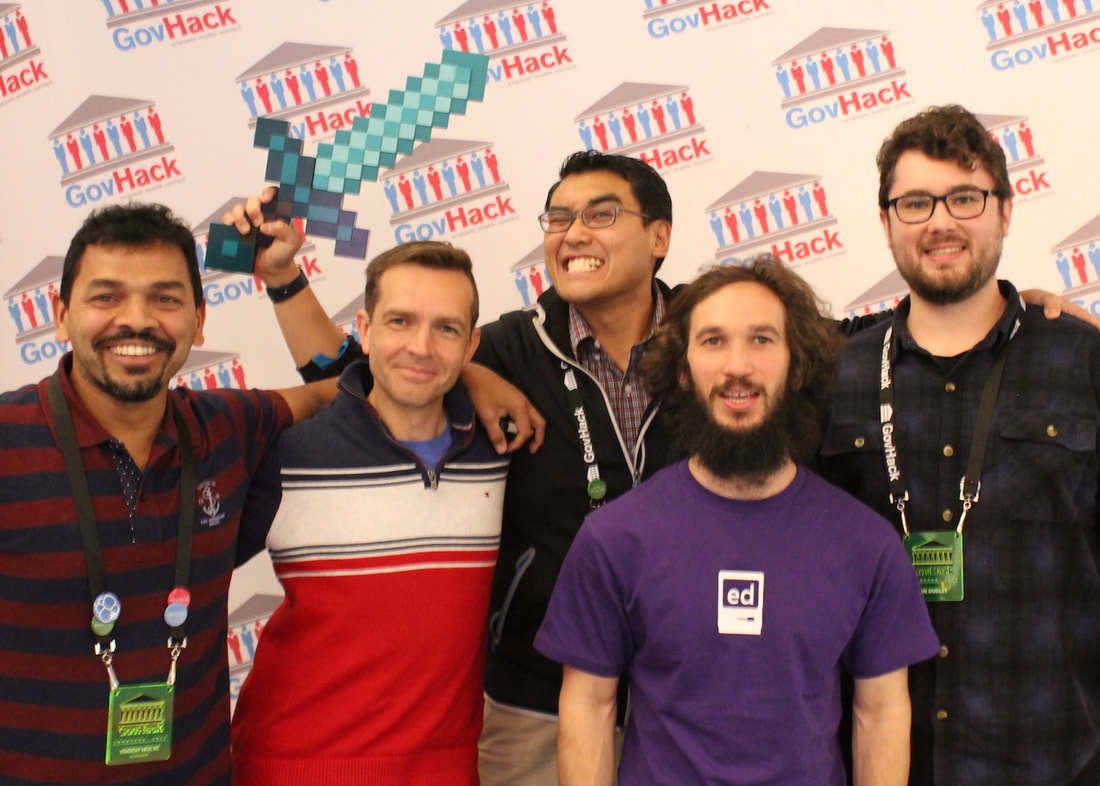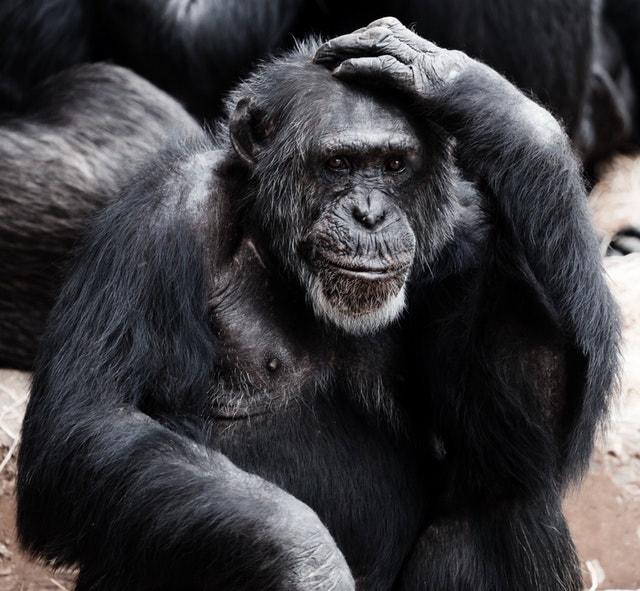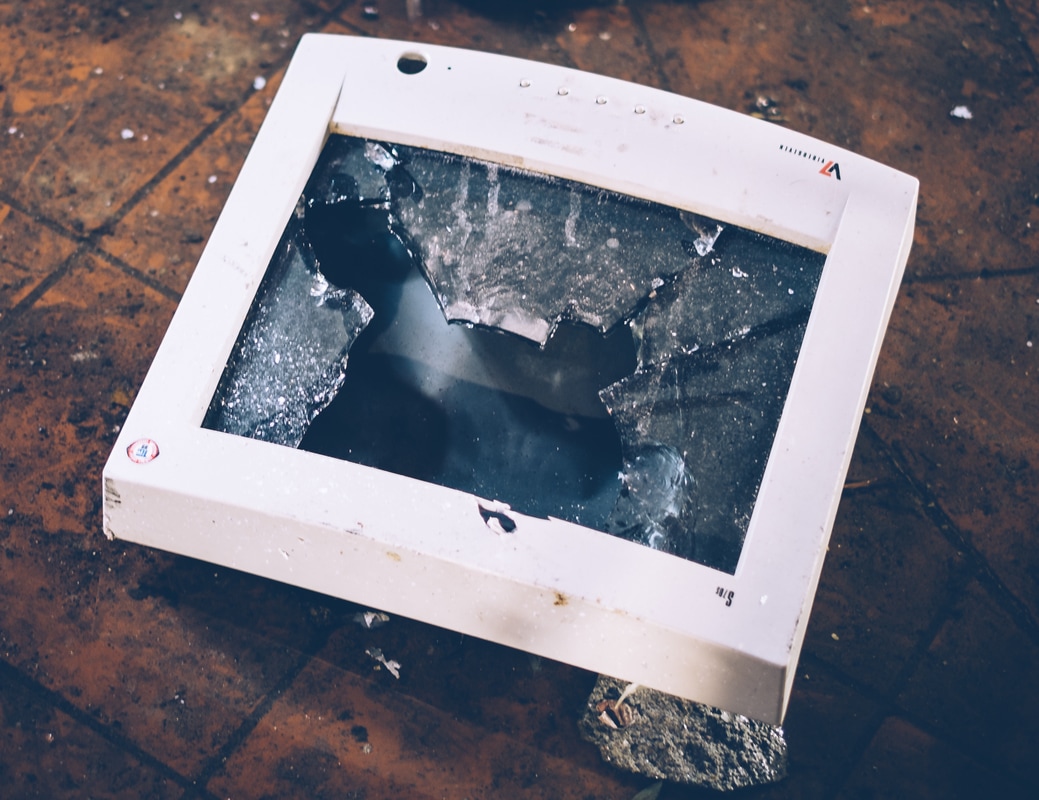|
For me the new year is always an exciting time. I love Christmas for one as it’s a time of hope and reflection on the goodness in humanity. It also helps us move on from mistakes of the past and look forward to the future possibilities in life. However, as I mentioned around this time last year, it’s got nothing to do with shallow New Years’ resolutions that barely last till sunset on 1st January. It’s far deeper and far more important than that.
The end of the year is instead a time to think big! If you look at the story of Christmas, a simple baby clothed in nothing more than a collection of rags in a barn, surrounded by farm animals brings a message of hope, the likes of which the world has never seen before. It’s simple. It’s raw. It’s completely unassuming and it’s shaped the world for millennia. That simple message of hope has brought people together, healed wounded relationships and helped generations to imagine a better world. Our world is far from perfect and the reality is that it’s filled with inequality, despair, hatred, greed and fear. However, with massive problems, come great opportunities. Whether it’s through food aid, clean water projects, affordable shelter or education, as global citizens living in Western democracies we can make a difference. If you take a quick look for example at the World Food Program - www.wfp.org. They’re fighting famine and starvation across 80 countries and helping feed approximately 80 Million people each year. What’s the cost of a single meal to keep someone alive? 39¢ which equates to $1.17 per person, per day! When you think how much we spend on a coffee, this puts into perspective the extent of the inequality in the world and how even going one day without a latte could feed someone for half the week! Back in 2010, Josette Sheeran set out 10 Ways To Feed The World and whilst hunger is still a major issue, the core principles of how individuals and groups can help address this major problem remain the same. It’s about taking real action and this is what makes the difference in any situation. If you do nothing, nothing will change. If you take real action, then you can change the lives of others for the better. In a world where people believe they’re making a difference by changing their Facebook image overlay or liking an image after another tragic bombing, shooting or vile act, we need to avoid such shallow sentiments and look for real ways to make a difference. Even if it’s just making a difference to one person, one family or your local community, this will have more of a lasting impact than the pointless liking of a digital image that will disappear as quickly as it appeared. Armchair activists that think they’re doing something by clicking a button, are as useful as fly screens on submarines and should be avoided at all costs. Hence, what can you do? On one level, you could donate to an organisation that helps feed countless people across the world. On a much more pro-active level, you could join a community service group, help out a disadvantaged school (sadly in Australia we have many disadvantaged schools despite our overall national wealth) or you could even help out with meals on wheels for elderly members of the community. There are so many opportunities to make a difference and once you break down the problem into smaller parts and take some action to do something about it, you can start to make a real difference. Despite this, as just one example, you don’t have to focus on hunger. There are countless other social, economic, health and well-being issues throughout the world that need to be addressed. From clean water, to education, to poverty, to slavery and freedom of expression, the world needs your help. Even if it’s only a small contribution, it’s still important and far more effective than doing nothing at all. In 2018, don’t let enormity of the human condition overwhelm you or stop you from looking at the opportunities to make a difference. As my old friend said, ‘How do you eat an elephant?’ I replied, ‘Why the hell do you want to eat an elephant?!! That’s kind of weird and upsetting!’ He then told me it was a metaphor and he really didn’t like to eat elephant (or so he says…). But seriously, how do we take on massive problems? We approach them one step at a time. If everyone took on even just a small community service project, or helped someone out in just a little way, with each step, we move closer to a better world and one in which inequality, violence, hatred and fear is a thing of the past. As this year comes to an end, think about the importance of the Christmas message that remains so strong and important after 2,000 years and from this, consider what positive impact can you have on the world as we know it, throughout the year ahead.
0 Comments
When I was at school, I'd never heard of something called an incursion. In fact, I've only heard it in recent times. To me it just sounds like the school is getting raided by teams of crazed militia. I'm not sure whether it's just a stupid term for having a guest speaker, or an attempt by schools to avoid taking kids off site, by bringing the excursion to them.
If it's the latter, then there’s several problems with this, as so much learning occurs by actually getting out there and doing stuff, not by hanging around in the classroom. This is not to devalue the benefits of a guest speaker, but seriously, call them a guest speaker. The next time I go to a school to do a presentation, if they call it an incursion, I may feel like I need to bring a large collection of stray cats and let them loose to cause an expected level of disruption! There is a serious point to this though. I’ve noticed an increasing number of schools opting for this type of experience for their students (maybe not involving cats), but having ‘incursions.’ The idea of a virtual ‘excursion’ falls into this same area of total risk avoidance and borders on stupidity, because we're creating a generation of people who can't cope with any sort of adversity. They're too used to having everything done for them or being able to do everything at arms’ length through technology. When things get real, they go to pieces. A recent example of this was on a long-stay camping program. The students aren't allowed to bring phones, because part the aim is for them to have a break from the distraction of technology. One student was caught with his phone, and when confronted with this and the phone was confiscated, he had a complete meltdown. This same concern ties back into the idiotic notions of incursions. Let's keep everything safe and risk free because we’re worried too much about consequences. I’m sorry to say, the world is full of real consequences and if you don't educate kids and expose them to at least some of this, then you're setting them up for failure. There are many excuses why people want to avoid real experiential education, but if you want kids to learn and grow, you need them to face real challenges, feel discomfort and be able build up some resilience in anticipation of what will hit them once they leave school. The danger of failing to do this, means that you're just setting kids up for failure. Therefore, by totally avoiding risk, you're actually causing real harm to the students. So the next time you're thinking of either going to the art gallery, or brining the director of the art gallery to you, stop being stupid, book a bus and go and see real works of art, rather than have someone just come and talk to you about it. Real experience produces real learning outcomes and there is no substitute for this in life. It’s always awesome when you get to go to a conference that’s in a great part of the world. If possible, take a day either side of the conference to explore and enjoy the area.
Recently, I had the chance to go to Queenstown, New Zealand, the adventure capital of the world! It’s an amazing town set upon a picturesque lake and surrounded by jagged mountains. It was the end of the ski season, so despite it being fun to ski slush sometimes, it wasn’t what I was looking to do whilst out here. My mission was to take a day off and explore! As an entrepreneur, you often get so caught up in juggling all the aspects of your business, you don’t take time to rest and recover. After two massive months, a relaxing day of drinking coffee and adventures was exactly what was needed ready for the conference the next day. Wandering around the town in the morning, I found so many outlets and options from which to choose. For no particular reason, I walked into one place and started exploring some brochures. I saw one with a helicopter on it! Despite the significant amount of flying I’ve done over the years, including time spent learning to fly, I’d never been in a helicopter before. However, today was going to be the day and there was a great looking package deal that combined flying, a jet boat and a luge ride. This sounded just like my sort of thing. Turns out… it totally was! First up was the jet boat along the lake and into the Shotover River. The water in the glacial lake was stunningly clear, clean and crisp. The whole way along you could see the bottom comer closer and drop further away from you as you sped along. Best not to look at the bottom, as you realise how little water there is below. I’m still amazed by the fact that these boats can operate in three inches of water! Literally skimming along the surface of the water! The best part of the ride was hitting rapids and spinning around 360 deg in a massively tight turn. I was only slightly soaked as the water swamped back into the boat from behind me. After some thrillingly close calls with trees at the edge of the river, buoys in the water and an angry duck, we cruised back. Getting dropped off at a different jetty near the airport, I was met by Peter who drove me up to the heliport. For me, this was the most exciting part of the day. My first time in a helicopter! I didn’t know what to expect. As the rotor spun up and accelerated the whole aircraft started to shake. After a call to air traffic control, the pilot revved the engine and with a slight jolt, we lifted off. It was the most unusual feeling as the ground just slipped away, becoming increasingly distant as we crossed the runway of the main airport. We were quickly whipping along at 100 knots. The view was amazing. I can only imagine how awesome it would have been inside that navy helicopter we saw flying down inside the Shoalhaven Gorge, as where I was there right at that moment was spectacular. About fifteen minutes later, we were at the top of one of the snow capped peaks in the Remarkables. It was at 5000ft with a clear view back down to Queenstown in one direction and Cardrona in the other. Being back in the snow was a wonderful feeling. It’s been far too long (since January) that I’ve been in the snow and I’ve definitely missed it. Scooping up a handful, I squeezed the icy ball in my hand and threw it off into the distance. After a bunch of obligatory photos, we were back on the chopper and flew past the Remarkables ski resort on the way back. I managed to fly in the front of the chopper on the way back and it was even better than I’d expected. It was a thrill I hadn’t experienced since the days of learning to fly in a fixed wing plane, thankfully without the engine cutting out on final approach! The next part of the adventure was a gondola ride to the top of Queenstown, followed by riding the luge! I’d met an American girl by the name of Bree on the ride over from the heliport who was doing the same things as I was and we headed up the gondola and rode the luge around which was lots of fun. As with any adventure, you never know who you’re going to meet along the way! The luge was basically a downhill go-cart track. Catching a chairlift to the top, you then rode these unpowered carts down this cool, windy track. It was amazing fun and a great way to end the day’s adventures! I couldn’t think of a better place to be coming to a conference than Queenstown NZ! As your world can sometimes become a blur of different hotel rooms and conference spaces when you’re constantly rushing around and managing different aspects of life and business, it’s important to find opportunities to enjoy your time in amazing locations. Even if it’s just for a few hours or a day, get out there and find yourself an adventure. Business can come and go and will always be there. However, at the end of the day these are the most important things in life and form the memories and experiences we cherish forever. It all began with a quick trip to Lismore. I found myself nominated as a finalist for the Alumni of The Year at one of my old unis. (If you’re wondering, I went to three different ones, if you’re not well… it’s too late now!) It was a nice feeling to be nominated and heading back to Southern Cross for the dinner.
The evening itself was a great one and I ran into a number of people I already knew and met so many more interesting people from across Australia who were now doing some amazing things. I always enjoy hearing about other people’s challenges and experiences in whatever they’re doing in life, as it puts your own busy world into perspective. I even met the musician behind the “Bob the Builder” song, which was fun. After the dinner, I’d planned a quick getaway for a couple of days in Yamba, which was another place I hadn’t been since graduation. It was a warm and wonderful change from the icy conditions of the late winter we’d had in Southern NSW. I went for a couple of runs, ate some local seafood and had a generally relaxing time. It wasn’t until I was heading home that the dramas began. I left on Monday morning, giving myself plenty of time to get to the airport for my 11:45 flight. Arriving in Ballina, I stopped for coffee and managed to find a wonderful café called …. It was a very smooth double shot latte and just what I needed. Arriving at the airport, I checked the rental car for marks before dropping the keys back in the box. On check-in, I was informed that the flight was going to be delayed by two hours because of a meltdown of the air traffic control system in Sydney. I thought, ‘Oh well these things happen. I’ll go for a walk.’ I headed off down the road in search of something to do. I found a homemakers centre in the industrial area and wandered around the air conditioned showroom until I’d seen the same lounge far too many times and considering I don’t own a house to fill with furniture, it was rather pointless. Heading back to the airport, I covered some 5km and was now quite hungry. Stepping into the terminal, I heard over the PA system that there was a further delay in the flight and the airline would be providing food vouchers for everyone on the flight. With my lunch paid for and a new departure time, I was happy to sit and catch up on some work. For the next hour, I answered some emails and wrote an article, another advantage of being able to work from anywhere. However, as my battery charge diminished, the delays in the flight seemed to increase. There was a momentary reprieve when it was announced the plane had left Sydney and was on its way. As I had to get a connecting flight to Canberra, I was starting to get a bit concerned about the time. Regardless, I’d worked out that even with another delay I’d still make it. The plane landed and the arrivals area flooded with the passengers out of Sydney. Thinking it would be a fast turn around, I put my phone away and started chatting with a lady who had just sat down next to me. Turns out she was a teacher and had been up scoping out new jobs. We chatted for some time, as the small departure lounge filled with expectant travellers returning to Sydney. There was a tense anticipation in the air as the plane sat commandingly on the tarmac. Another announcement… ‘We’re sorry to inform you that the pilot of flight JQ451 is over his allowable hours and therefore is unable to fly again today. As a result this flight is cancelled.’ The voice over the PA was suddenly drowned out by hysterical moans and exclamations! The service desk attendant said something to the effect ‘We apologise for the inconvenience…’ but it was barely audible due to the ruckus of bogans swearing. The departure lounge emptied quickly amid a rabble of angry curses. I remained sitting, thinking of alternate possibilities that could be slightly more constructive and profitable than swearing and yelling at airline staff. In situations like this, you have a couple of options. Quickly turn into an abusive dickhead, or strategise around the problem. As we were already well over the abusive dickhead quota, I decided on the latter. What were my options? I had three meetings the next day in Canberra starting at 10am. I really wanted to be at all three, but two were moveable. The final meeting in the afternoon had been a long time coming and would’ve been hard to reorganise, so that gave me the hard deadline of 12:30pm landing back in Canberra the next day. Not too bad a scenario! I quickly looked up alternate flights from other nearby airports, which in Australia is still quite a trek. Goldcoast was the nearest, but no flights given the lateness of the day. The only other one was Brisbane, which was further away, but had a flight at 7:10pm. I checked the map, I checked the time… I could make it. I quickly rang the airline to see if this were possible and after an anxious wait with my battery running low, it was! Feeling relieved, I dashed to the car rentals to get a car. Nothing was available at any of the 6 different rental businesses! I was back to square one. That solution wasn’t going to work, so I joined the back of the enormous queue with the other 180 people as the airline scrambled to find accommodation for everyone at short notice in a small town. After almost an hour in line an announcement came over the PA. The airline was willing to reimburse customers up to $150 for their accommodation if they organised it themselves. Fearing the sort of accommodation I was going to get given anyway by the low-cost airline, this was a great alternative. With what little battery I had left, I checked out places to stay and found a nice boutique hotel for $169.00. It looked really interesting and was a heritage listed building so I immediately booked it, as there were only a couple of rooms left. Getting there and back was a minor detail. At least I had a bed! I waited in line for another hour, as transport into town was arranged to the various motels. It was disorganised chaos however. Buses had arrived and passengers were being ushered onboard. I hung back as a wild rabble of bogans who’d been standing in line drinking for the past hour appeared as if they weren’t going to stop anytime soon. I felt relieved as I overheard they were going to the Best Western. Two other ladies had boarded that bus, but it was full and the bogans ungraciously told them to get off the bus. Meanwhile, I was standing just inside the terminal with one other lady by the name of Jill. I chatted with her for a few minutes before the other two who’d been thrown off the bus joined us appearing rather frazzled. We were the last four at the airport and after being given an assurance that another bus was on its way and going exactly where I needed to go, I was happy to wait a little longer. Relieved to get on the bus, despite not knowing the area, we had to direct the bus driver to the hotel. As we pulled up, a feeling of relief and excitement came over me. It was a magnificent old Victorian style two storey mansion. Inside the foyer, it was a beautifully restored building that had once been a girls’ boarding school. With some old uniforms and tennis racquets on display, it had a distinct St. Trinians feel to it! As we waited on the lounges for the receptionist, it was calming to be out of the din of the airport. However, the tranquility was about to be disrupted again. The receptionist walked out, saw four of us sitting on the lounge and a worried look appeared on her face. I knew at that moment, despite the ladies having asked the airline staff several times if there were enough rooms, there weren’t going to be enough rooms! Having booked the place myself online, thankfully she had a room for me, but then there was only one room left with a single bed and three ladies! At this point after the rolling problems the looks of horror on the ladies faces said it all. They weren’t going anywhere. They were all staying and that was final. It was almost like a scene out of Fawlty Towers. I asked if there was a spare bed in my room, but no, nothing, just a single. Luckily the hotel had a roll out bed for one and they put that in the room for the ladies, who then worked out the rest. With my stomach growling having missed lunch and the restaurant in the hotel closing, I said I’d freshen up and then meet everyone in the dining room. The dining room was more Fawlty Towers than reception had been, with everything but a hamster and a man from Barcelona. Despite the historic look and feel, the food was great. With the dramas of the day over, dinner was a wonderful experience. I was able to get to know three total strangers and enjoy a really enjoyable meal with them, an experience that would never have happened if it weren’t for a computer malfunction in Sydney. It’s often the most unusual circumstances which can lead to the best adventures. The only thing you need to be able to do in this sort of situation is have a sense of humour and always remain adaptable as the situation evolves. If you stress too much about it or just believe the solution is through yelling and swearing at people, you’ll miss out on the possibility of having a much better and memorable experience than what would have happened with the original plan anyway. I ended up shopping for sofas, meeting new people, sleeping in the old headmistress’ office in a slightly quirky and most likely haunted Victorian mansion and ended up back in Canberra for my most important meeting the next day. In any situation, where tensions may get high due to things not going to plan, never forget that the Chinese word for crisis and opportunity is one and the same. In the words of Homer Simpson embrace and enjoy the ‘Crisatunity!’ I enjoy going to conferences, although some are often far better than others because of the theme or approach of the organisation to a certain topic or area of shared concern. Recently, I went to my first regional development conference. I’d been on their mailing list for years and despite having conferences in some cool locations, I’d never been able to get to one before.
This year however, was different and I was given the opportunity to speak at the conference around starting tech business in regional NSW. Given the icy gale force winds we’d been experiencing lately, I was excited to escape to the warmth of Coffs Harbour for a couple of days. I admit that I missed the morning session of the first day. After landing in Coffs late the night before, I’d been frantically working on polishing my presentation for the next day. I then managed to sleep till 6:30am before getting up and jumping straight back into it. After a few more practice runs of the presentation and the ever-annoying last minute reformatting to PowerPoint to make sure it all worked whatever the setup was, I headed in. There was a vibrancy to the gathering which was exciting and the range of speakers was excellent, covering diverse topics affecting our regional communities from infrastructure to economic development to social demographics. Thus, there was something quite specific for everyone. Some of the most interesting sessions I attended explored the way in which regions were growing and the reasons behind the growth. There’s this massive myth that unless you’re living in a major city in Australia, you’ll never be able to be really successful, yet what does that even mean? Years ago when I started another business, someone said to me, ‘So when are you moving to Sydney?’ My reply was, ‘Why would I want to do that? I’d just have to sit in traffic all the time and waste all my money on rent!’ This is a key problem owning or working for a city-based business. Why would I want to waste all my time sitting in a car in stop-start bumper to bumper traffic when I can have a 10 min commute to town on foot? Added to this when you figure in the relatively low cost of air travel from most of our regional airports to our capital cities, then why would you bother living in a cramped studio apartment in which you can’t swing a cat, when you could live in a large house in the country where you can swing as many cats around as you like! Not sure why you want to swing the cat around, but you get the picture. However, regional towns are not just about a better lifestyle, which is now being easily afforded to digital entrepreneurs and those who don’t need to operate a traditional ‘shopfront’ style business. The most important part of being in a regional town is that of community. The sense of community and the opportunity to be part of something much greater than yourself is massively beneficial to yourself, your family and happiness in general. The days of regional towns being isolated by tyranny of distance, are quickly disappearing and the opportunities for jobs, business and being part of the community continue to grow. For me, meeting other business people from different regional centres around Australia was a refreshing experience and a reinforcement of what I hold to be so true. You can establish and run global businesses from regional Australia and have both a lifestyle you can enjoy and the opportunities for a global presence. Now all you need is a real world problem to solve or a customer’s need to fulfil, a fast, reliable internet connection, a few strong lattes and a massive amount of determination and persistence. You’re on your way to building an amazing business from a wonderful place in which to live. Work satisfaction is always an interesting challenge. Often people are in jobs just because of the money and I cant’t criticize that as a motivation. After all, people need to live. However, what do you really want to be doing? A vitally important question for those looking at jobs, looking at careers, and setting goals is “Do you really want to be working in the job you’re in?” Or do you want to be doing something else? Often we look at other people’s jobs and think, ‘Wow, that looks amazing! I really want to be doing that!’
However, job envy is an interesting problem. For example, often people look at the work I’ve done over the years and say to me, ‘Oh, you have the best job!’ You work in the best location.’ Some of the time, they’re quite right, because I’ve shaped the way in which I’ve worked, to be in jobs and locations that I’ve really enjoyed. However, sometimes no matter how fun the job might appear, due to of the culture within an organisation, it can be a horrible place in which to turn up to work everyday. The best job I had to date, was as Director of Outdoor Education for a Victorian School. Unfortunately, it was only a long service leave replacement role and for some reason, the person I was replacing wanted his job back!! Unbelieveable!!! When I started this job, I was thrown in the deep end. It was the busiest time of the year. All the camps and activities were happening one after the other. I had three weeks to prepare the entire program for hundreds of students and staffing to match, the remaining six weeks were to run the program. It was intense! A non-stop ride, as I was responsible for three campuses. It meant back to back meetings, travel, reccies, risk assessments, medical reviews and a wide range of other preparations to ensure everything ran smoothly. However, despite the long hours, I really enjoyed the job. Another intense job I had, was on a winter snowsports program and it was fantastic. We were up first thing in the morning, had breakfast, drove to Thredbo, skied the morning, drove back down to Jindabyne and had lunch before teaching classes until 5 o’clock. There was a short break between the end of lessons and dinner, then back into prep for the evening. This was a relentless job, but what made it enjoyable was the team with which I worked. In another outdoor education role I had many years ago, the culture within that school was so toxic and so destructive that no matter how enjoyable the activities might have been, it was horrendous to go to work everyday. The bottom line was that staff weren’t valued. When there were important issues to discuss, staff members were ignored and marginalised. This led to resentment and total dysfuntion within the organisation. Ultimately, it was a situation where you had an insanely enjoyable program in which we ran mountain biking, kayaking, sea kayaking, hiking and an enviable fitness program over six months, but as the culture grew more toxic, it didn’t matter how much fun it could have been. It ended up completely unfulfilling. Sadly, people employed to help the social and emotional development of teenagers, were totally incapable of growth themselves. When you have incompetent managment within an organisation, it destroys teams and destroys the integrity and character of a workplace. What I came into years before, which was a happy and exciting place in which to work, turned into a miserable, arduous, horrendous place that was turning over staff faster than you could blink. As you can see on the outside, being able to turn up to work everyday in shorts and a t-shirt, teach a few lessons then go for a bike ride sounds fantastic! At one point it was. However, throw in poor management and a toxic, cancerous culture, then no matter how good it looks on the outdside, the rotting core destroys the organsiation from within. The end result for us was that the programs being run were only ever half-assessed and from an educational point of view, quite ineffective. So, one of the really critical things you need to consider whenever you’re looking at a new job or re-evaluating your current one, you have to enjoy what you’re doing because enjoyment and fulfilment sparks the next level of commitment. It sparks you to have ideas. It enables continuous improvement and it enables growth within an organisation. As that organisation grows and flourishes, so can everything else about your life. However, if you stay in a job just for the sake of the money, no matter how good that money is, eventually, you’ll end up bitter and twisted and resentful only damaging your life and the lives of those around you. Are you happy at work? Is your job fulfuling? Are you feeling that what you’re doing everyday is important and valued? Or are you just collecting money? When you can honestly answer these questions of yourself, then you’re ready to assess how worthwhile what you’re doing truely is. If it’s just for the money, it’s time to start looking for new opportunities. However, if you feel valued and enjoy what you do, then you’re already in the right place!
As with all revolutions, phenomenons and fads, there’s an exciting lead up period. There’s a booming peak before the steady decline towards normalisation. Eventually, people fall back to what they know best and how things were in the past. Whilst some things will have changed, other things will feel different. However, in the case of social media and especially those people who have become social media ‘stars’ simply by lifting their shirts, uploading stupid videos of their cats or some other similarly pointless exercise that for five minutes some people find funny, there’s got to be a point at which people’s interest fades and popularity declines. It’s like the life cycle of a child’s superstar on steroids! They’re in movies, on TV, splashed over the cover of trashy magazines and super popular for this brief fleeting moment in time. But then, their popularity wanes. People become disinterested and they don’t have the requisite skills to be able to cope with the lack of attention. Often, they turn to alcohol and drugs as a coping mechanism when they realise what little substance there is in their lives. This can be a fast decline into irreparable emotional damage, with many a child star ending it all at their own hands. A hefty price to pay for those fifteen minutes of fame. The benefit and curse which social media has created is that it increases people’s ease of access to a world of attention, but at the same time exposes them to the swift brutality of the decline. The decline can happen just as rapidly as it kicks off, so you could be an instant hit on Youtube. You could be an instant hit on Instamagram or any other social media platform, but what happens when your posts don’t get as many likes? Do you just start deleting them? What happens when you don’t get as many views? How does that make you feel? Why have people turned away from you? Five minutes ago, you were on top the world, now you’ve been replaced by a cat falling from a table. The song Don’t Cry for Me Argentina comes to mind because Eva Perón is this very naïve woman who becomes engulfed in the fascist machine of Argentina through her marriage to Juan Perón. All is wonderful for her and the country, until it’s not. Her public image hid the true horrors of her husband’s brutal regime. Now social media provides the flawless front to soulless money making machines, prepared to chew up lives without a second thought. The danger that comes with those living their lives through social media and being totally reliant on this for their window to the world, is that they become disconnected from reality and being built up only to fall horribly. Social media mightn’t be the fascist dictatorship that causes people to disappear in the same way that was seen in Argentina, but it is a machine. Despite the window dressing of equality and democracy of expression, the reality is that it’s designed to exploit people. It’s designed to get you addicted. It’s designed to manipulate your emotions and ultimately it’s designed to make money. Whilst marketing has its place, the unethical ease with which young people can be built up to be a ‘star’ and then promptly trashed by the machine is a blight on society. Many young users might not be aware of the fact that what they’re experiencing is just a temporary, shallow and empty cycle and in the end, they’re unable to adapt when their posts start to get less likes and interest in them fades away. This unfortunately leads to increased mental health issues over the long-term, as the rapid burn of internet popularity, quickly fizzles out. To combat this, it’s important for young people to have a range of life skills and relationship skills which have been developed in the real world. If you have the skills to develop positive and healthy relationships, contribute to your community in a meaningful way and have the ability to think, adapt and grow through working with others, then you can safely use social media as a tool, levering the technology to your advantage. This way, you’re not at the mercy of the soulless emotional roller coaster that is trashing so many young lives today. If you approach the world of social media with the understanding that, like all other technology, it’s only a tool and not the be all and end all of life, then no matter how fast your social network grows, you’ll always remain grounded in the fact that at the end of the day, likes are just a meaningless gesture that require no real thought, but time spent with real friends, experiencing real things is priceless. The GovHack Team - 2017! I felt the bracing cold of Canberra, as I stepped from the car in anticipation of another challenging weekend at GovHack. I can understand why the Federal Parliament has a winter recess! However, despite this, I was rugged up and ready. Walking up to the Snow Centre (Canberra Grammar’s amazing technology building), it was lit up with the GovHack and CGS logo projected onto the wall, looking more like a night club, than a school. Thinking of which, imagine how much money you could make from doing pop-up night clubs in schools on the weekends and in the holidays! Think about it! You have the venue, the sound systems, plenty of parking… You just need a liquor licence and you could make a ton of money! Hmmm I could be onto something… (patent pending © David Gregory 2017!!!) Anyway, walking in, the place was buzzing with excitement. Even the registration process was cool, as I lined up to register. It was in a darkened room, illuminated by a number of computers. My name badge had been printed on this cool looking Perspex, which in the darkened room appeared to glow. Armed with my badge and my laptop, I walked around and said hi to a few people I’d met last year. However, my nerves were starting to kick in. For me this sort of event, at least getting started is way outside my comfort zone. I may run around the countryside mountain biking, hiking, exploring new places and speaking to large audiences without any problems, going into an unknown project with a team of people I haven't even met yet is a tough and challenging experience for me. However, that's the whole point! Part of the challenge for me in doing something like this, is the fact that it is confronting and nerve wracking stepping out into the unknown. Whilst I often talk about ways in which to push others outside their comfort zone, it makes little sense to be teaching this, unless you're going to do it yourself. Despite the nerves, the apprehension and not knowing how that night was going to turn out let alone the whole weekend, I walked in. Always worried that I wouldn’t be able to find a team, I pushed through this negative thinking, in anticipation of what could be. As usual, I was proved wrong on this. At the team forming point, I met some amazing and diverse people with whom I ended up working. Whilst there are prizes for the most innovative use of data and a range of other categories, for me success was more to do with finding a team and working with that team to produce something interesting over the next forty six hours. The excited noise of the crowd subsided, as ACT organiser Matt Purcell introduced the evening and ran through the rules of the event and provided a rundown of everything that was happening over the weekend and most importantly what was for dinner! At the conclusion of his presentation, there was hurried activity as teams scrambled to their breakout rooms to start hacking, or grab a can of drink from the fridge, both good options! For our team, the first challenge was to get to know everybody's names and work out what everybody's strengths were. We quickly went around the table and introduced ourselves with a quick background as to what we do and why we were competing at GovHack. Most teams had been organised beforehand and many of them had already devised some idea of the sort of projects they were going to work on. However, when you’ve just created a brand-new team with people you’ve never even met before, suddenly the challenge of this exercise escalates. Not only do you have to get to know people and work out their strengths really quickly, you have to come up with a cohesive and innovative idea using government data and produce at least a semi-working prototype within forty six hours. For many, this might be an overwhelming task. However, I believe the key to success in this is effective communication. Even though we weren't able to go straight to a room and start working on our project, we were able to communicate effectively with each other and through our discussions and brainstorming, ideas started to flow and slowly come together. As I've said many times before, for me being innovative is really hard sitting around a table. Yet this time, I found as ideas were being thrown up as to what datasets could be used, I was able to start bouncing ideas back that over the next hour and a half started to form into something quite interesting. The only thing which stumped all of us was the team name, which in the end pretty much ended up being based upon the solution that we created. So what did we come up with? After harassing countless government mentors and asking them what their biggest problem was, we came up with a mashup idea which evolved from using the cat restricted area data to chase down rogue cats, to a mobile app which allows drivers to quickly and accurately report injured wildlife to ACT Wildlife services. With the ultimate aim of faster rescue services and better data-capture on injured wildlife, our team got to work to research the impact of this in more depth and then built a business case and prototype from this. The day seemed to evaporate as we brainstormed, planned and developed the idea. The sun had set and the rich tantalising smell of Indian food wafted through the air. With the organisers catering for 170 people, I've never seen so many massive buckets of curry in my life. It was a much needed and appreciated meal after a long day of hacking! I headed off around 8:30 that evening after what had been a very productive day of team work. We’d all been working on our individual tasks, which were all contributing to the big picture of our overall project. The next day started slowly, but the pace picked up to frantic levels as the deadline approached. We’d completed the project and the video just in time. However, after the first attempt to export the video from iMovie to YouTube failed, I had to do it manually and when I did, the computer was telling me it would take 26mins to upload the video and there were 13mins to go!!! Not able to rely on a timely server crash, I quickly re-exported the video at a much lower res and nervously cancelled the upload, removed the file and started again! The smaller video file uploaded quicker than I expected and thankfully with 4 mins to go, it was in! Honey I Hit a Roo! - https://youtu.be/Gpi8EZiYi2Q As the upload was confirmed, a great feeling of relief and achievement flooded in. It felt great to have successfully completed a project that two days ago, we had no idea about. Whilst at this point, it’s easy to reflect and say there was nothing to worry about, which in the end was true, if I hadn’t challenged myself and pushed myself outside my own comfort zone, I’d never have met such a great team who included Yogesh, Anthony, Ian and Mahathir and been able to create a really cool solution to a massive problem in Australia. For the remainder of the year, I encourage everyone to do something that’s way outside their comfort zone. Don’t just teach it! Actually do it! Through this, you can become far more confident and effective in your own work and your own life. For me, this was such a great weekend, meeting new people and reconnecting with others I hadn’t seen in a long time. If you’ve never been to something like GovHack, then you must save the date for next year! A huge thankyou to Canberra Grammar, Matt Purcell and all the other GovHack volunteers who made it such an amazing weekend! Great work for me! It was a wonderful experience and the atmosphere of the whole event spoke volumes about how well it was done! Recently, I was at a council meeting where they invited members of the community in for a brainstorming session. I liked the sound of it and there was free food, so I decided I had to go along. There were around 30 people there, with a mix of people from Council, business owners, local professionals, and other community members.
The task for everyone was to come up with innovative ideas for creating a modern connected city. Sounds simple, right? As with many other brainstorming sessions, the tables were covered with butchers’ paper and we had permanent markers to jot down notes. A presentation was given by Council as to what they were already innovating with in terms of local services. Whilst this was quite interesting, unfortunately, it seemed to skew the way everyone was thinking about innovation and so instead of people truly throwing out radical and innovative ideas, it merely appeared that they were replicating ideas, or just adding to the ones that Council had already said they were doing. Whilst there’s usually an advantage to frontloading situations and getting people into the right mind-set, unfortunately in this case, it didn't seem to work and many of the ideas that were being thrown up, were not innovative. They were just pointless and some quite ludicrous. I found myself sitting there feeling quite disempowered, as I frustratingly had no innovative ideas of my own. So why was that? Why was nothing coming to me? I've created and developed a number of innovative products, from the ‘Reducer Flush,’ that limited the amount of water that’s used each time you flush your toilet, as well as software for the livestock industry that provides up-to-the-minute pricing data for farmers, to medical and incident management software for teachers when they're out on excursions. If anyone at that table should have been coming up with ideas, I felt it should have been me…Or should it? Despite my frustration, and feeling totally and utterly out of my depth, all I needed to do was realise that for me, sitting around a table and brainstorming with other people was never ever going to work. Why’s that you ask? If all it took to be innovative was to sit around a table and talk, then the world would be running short of problems to solve. The number of times I sat around a table at work in this manner, should mean that we have the most amazingly productive and cohesive workplace on earth. Unfortunately, it's not in time spent sitting around the table as that usually results in plenty of stupid ideas and a total lack of productivity. Innovation is therefore a really tricky thing to understand. I recently read a number of books on early stage start-ups in the US. Many of these start-ups don't actually do anything. All they seem to have done is put a ‘high-performing’ team of people together and try to get them innovate, then at the same time try to delude VCs into giving them money to perpetuate their fantasy long enough in the hope of striking something useful. Think of it being like the gold rush days, where everyone was trying to get a piece of the action and instead of digging for gold in hills that actually might have gold in them, you just dig anywhere you can find a piece of dirt. Taking this approach just means you will get very good at moving mounds of dirt. So how do we actually innovate? For me, every time I've had a good idea, it's been whilst skiing, paddling or running. It's not until I'm in a creative space that works for me, that I can be creative. Despite many people telling you if you put enough creative people together they will create something amazing, this is not always the case. The opposite can be true as well if you put a lot of creative people together, there is every chance they just go to fight. Can you imagine Michelangelo, Leonardo da Vinci and Vincent van Gogh in the same room? Would they work together to create the world's greatest masterpiece that would eclipse all of their individual works? Or would they simply argue and end up throwing paint at each other? There is so much money in innovation and technology has been a great enabler. Consequently, people are desperate to somehow be part of it and try to invent ways for people to innovate. However, this often fails to recognise how individual and obscure the art of innovation is. Many innovations fail because they're not developed to solve a real-world problem. The truly successful innovations however, when looked at retrospectively seem so obvious. They usually are, because they fix a problem that previously caused great pain or annoyance. So how do you come up with a simple and obvious solution that people will talk about retrospectively and say how ingenious it is? Firstly, what's your greatest frustration? Secondly, how can you improve or change something to reduce this frustration or fix the problem? Thirdly, when you come up with all sorts of ideas to solve your big frustration, test out the theory to see if it’s also other people’s frustration and check whether your solution would work. Fourthly, take action and do something about it. With any innovation, it's often the last step that is forgotten. Many people have great ideas every day. However, very few of them have the time, energy and persistence to take the action necessary to turn these innovative ideas into workable solutions that make a difference to people's lives. Next time you’re at work and you're forced to sit at a table and solve all the world's problems at once, think about where your most creative space is and instead of sitting around the table go to that creative place so you can innovate in a natural and effective way. If you approach innovation in this way, you won't be left at the table feeling disempowered. You can come back to the table with something truly amazing. This week it's story time! What's been your worst day at work? Has there been a day when nothing has gone right, where everybody seems to be against you and when you just wished the day would end? I've had many days like that over the years, between paranoid conspiracy theorists ringing me up over and over again when I worked for a politician, to my bus catching fire whilst trying to pick up a group of stranded students, there have been some exceedingly long and frustrating days. However, one of the more bizarre days happened in my first job at a Retravision store. Whilst at that stage they were the biggest retailer of electrical appliances, they’ve been replaced by other retailers of electrical appliances and online retailers.
It was a Thursday morning and a day like any other. I arrived around 8:20 ready to setup. However, overnight the electrical fuse box at the back of the store had been vandalised. An electrician had arrived and was working on the wiring outside the loading bay. There were only two of us in the shop that morning. The owners and the floor manager were away, leaving us to open and run everything. My colleague told me not to turn anything on until we got clearance from the electrician, so we waited around and several coffees later, the electrician finished his work and it was time to turn everything on. I started upstairs with the wall of TVs. They were the old sort which had a large vacuum tube inside of them, a standard and popular feature of any electrical goods store. One by one I turned the TVs on until the 15 metre wall was illuminated with the flashing of the same mindless daytime TV channel. Just as I finished turning the last one on, I heard a loud hissing noise. Stepping back, I glanced back along the wall and heard another hissing sound, then another and another all coming from different TV sets. Suddenly there was a loud bang! Dark black smoke plumed from the back of a TV at the start of the wall. This was followed quickly by another loud bang! More nostril burning smoke billowed from behind the TVs. There was another hiss, and another each time followed quicker by more loud bangs as the smoke grew denser. TV after TV continued to explode in rapid succession from one end of the wall to the other. Set after set after set hissed and exploded. The room now choked with dark black acrid smoke. I stood before the smouldering ruins of what once was tens of thousands of dollars worth of TVs, now nothing more than lifeless screens. How was I going to explain this one? I nervously walked downstairs to break the news to Barry. Thinking which, out of a staff of nine, three were named Barry. What are the odds of that? Anyway, the Barry that was there with me that day was one of the salesmen and not the Barry who owned the business who I'd have to explain this to later. “There’s a slight problem upstairs,” I said to Barry, which was probably a tiny understatement as the smoke had set off all the alarms and was so thick it started to linger its way downstairs. Barry quickly dashed up the stairs brandishing a fire extinguisher that was to prove totally and utterly useless. At the top of the stairs he stopped dead in his tracks. “Oh crap!” he exclaimed, seeing the extent of the problem. “I'd better tell the electrician,” he continued as he dashed back down the stairs and ran out the back. All I could hear from the back of the building was a series of loud swear words, sounding as if they were coming from the electrician. It turned out that somehow instead of leaving the power set on 240 volts, he had somehow upped it to 410 volts, consequently overloading the entire system and blowing the crap out of everything. Thankfully, salesman Barry made the phone call to owner Barry and filled him in on all the details of what had happened. Storeman Barry was out on a job and completely oblivious to anything that had happened. He is not actually part of the story but given that he was also named Barry, he at least deserved to be mentioned. Over $40,000 worth of TVs were destroyed that day, never to transmit another awful daytime TV show again. It took about a week for the caustic smell of burnt electrics to finally make its way out of the upstairs showroom and another week to finally replace all of the televisions that blew up that day. Whilst for me, it wasn't actually that bad a day at work. However, for the electrician, things could only get better. |
Archives
December 2017
Categories
All
Head over Here For My Outdoor Ed Blog - Challenge, Experience, Growth! |

